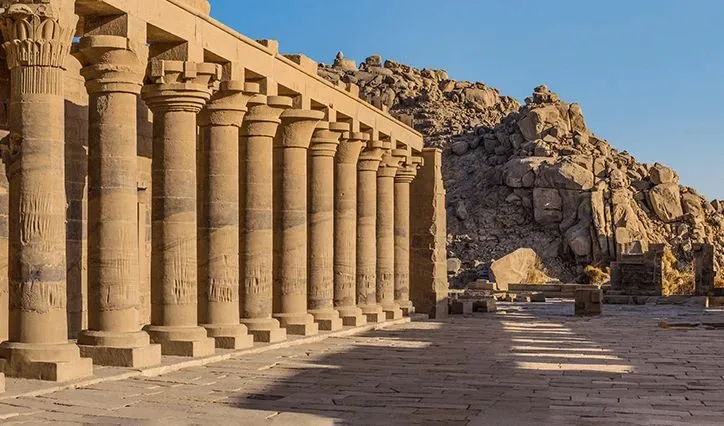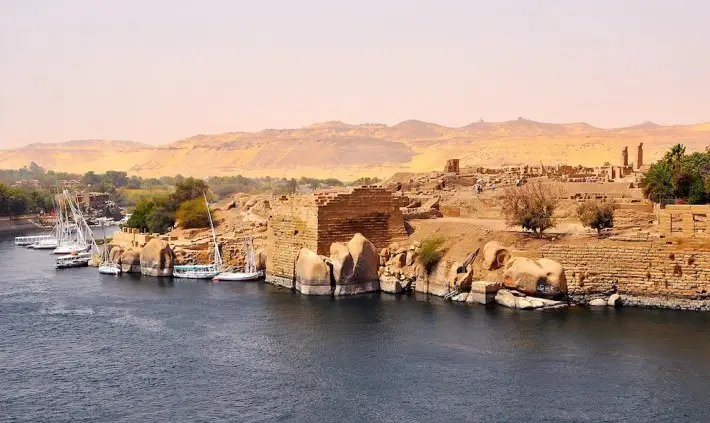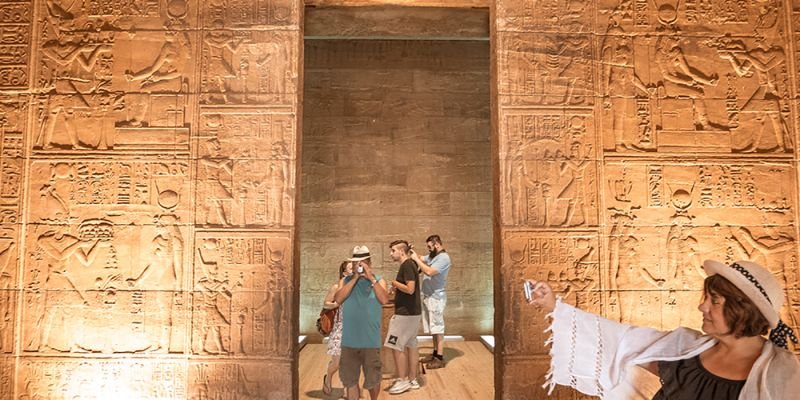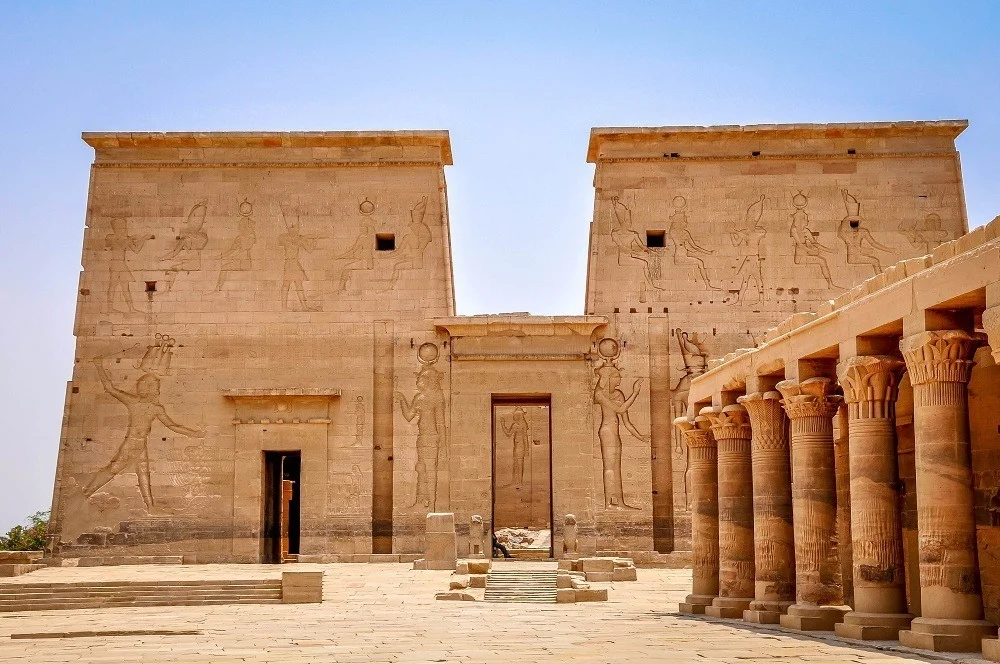Philae Temple, gracefully positioned on the island of Philae in Aswan, Egypt, stands as an enduring witness to the rich history and religious fervor of ancient Egypt. In this guide, we immerse ourselves in the fascinating world of Philae Temple, exploring its historical backdrop, architectural grandeur, religious importance, and the remarkable journey that led it to its current sanctuary.
Historical Background of Philae Temple
Philae Temple weaves a tapestry of history spanning from the 4th century BCE during the Ptolemaic period to the 3rd century CE in the Roman era. Dedicated to the revered goddess Isis, it echoes with ancient rituals and mythological tales.
Nile’s Edge to Agilkia
In the 20th century, the ominous rise of the Aswan High Dam posed a threat to Philae Island. To safeguard this historical gem, a global initiative unfolded. Between 1972 and 1980, the temple was meticulously disassembled, stone by stone, and resurrected on the nearby island of Agilkia.
Philae Temple’s Architectural
Philae Temple’s architectural prowess captivates every visitor. Majestic pylons guard the entrance, leading to a courtyard adorned with colonnades and reliefs narrating religious and mythological tales. The inner sanctum cradles the sacred shrine dedicated to Isis, creating a sanctuary of divine beauty.

Religious Significance and Cultural Depth
Philae Temple stood as a revered religious center in ancient Egypt, drawing pilgrims devoted to the goddess Isis. The temple served as a sacred space for offerings, rituals, and seeking blessings from Isis, believed to hold the power of healing and protection.
Nile’s Fertility Rites
The temple played a pivotal role in annual Nile flooding ceremonies, where devotees invoked Isis’s divine influence to ensure fertility and prosperity for the land. Philae Temple stood at the nexus of spirituality and the natural cycles that sustained ancient Egyptian life.
Island Oasis on the Nile
Philae Temple’s allure extends beyond its stone walls to the tranquil island it calls home. Surrounded by the gentle waters of the Nile and lush greenery, the island provides a serene backdrop for a journey into the heart of ancient Egyptian spirituality.

Modern Explorations
Philae Temple welcomes visitors from around the globe, offering a gateway to Egypt’s cultural heritage. Guided tours weave narratives of significance, while evening sound and light shows bring the temple’s history to life in a magical spectacle.
Philae Temple for Future Generation
The monumental relocation of Philae Temple marked a commitment to preservation. Ongoing conservation endeavors ensure meticulous maintenance, restoration of damaged structures, and vigilant monitoring of the island’s ecosystem, safeguarding Philae Temple for future generations.
Temple Complex
Philae Temple is part of a larger complex that includes structures dedicated to various deities, including Hathor and Harendotes. The complex features pylons, courts, colonnades, and sanctuaries.
Tourist Attraction
Philae Temple is a popular tourist attraction, drawing visitors with its well-preserved architecture, historical significance, and the picturesque setting on the Nile.

Frequently Asked Questions
Why was the Philae Temple relocated?
The relocation of Temple was a proactive measure to preserve it from submersion caused by the construction of the Aswan High Dam. The intricate process ensured the temple’s survival for future generations.
What is the significance of the sacred lake?
The sacred lake at Philae Temple symbolizes the primordial waters of creation. Pilgrims believed in its healing properties, adding a spiritual dimension to the temple complex.
Who commissioned the construction of Philae Temple?
Philae Temple was commissioned during the Ptolemaic Kingdom, with construction taking place between 380 and 362 BCE.
How to Reach Philae Temple from Aswan?
Philae Temple is accessible by boat from Aswan, providing a scenic journey along the Nile.
Why is Philae Temple Important?
Philae Temple is of paramount importance due to its historical richness, architectural brilliance, religious significance, and its successful preservation efforts in the face of the Aswan Dam threat.
What Happened to Philae Temple?
Threatened by the Aswan High Dam’s construction, Philae Temple underwent a monumental relocation from its original island to Agilkia between 1972 and 1980, ensuring its survival.

